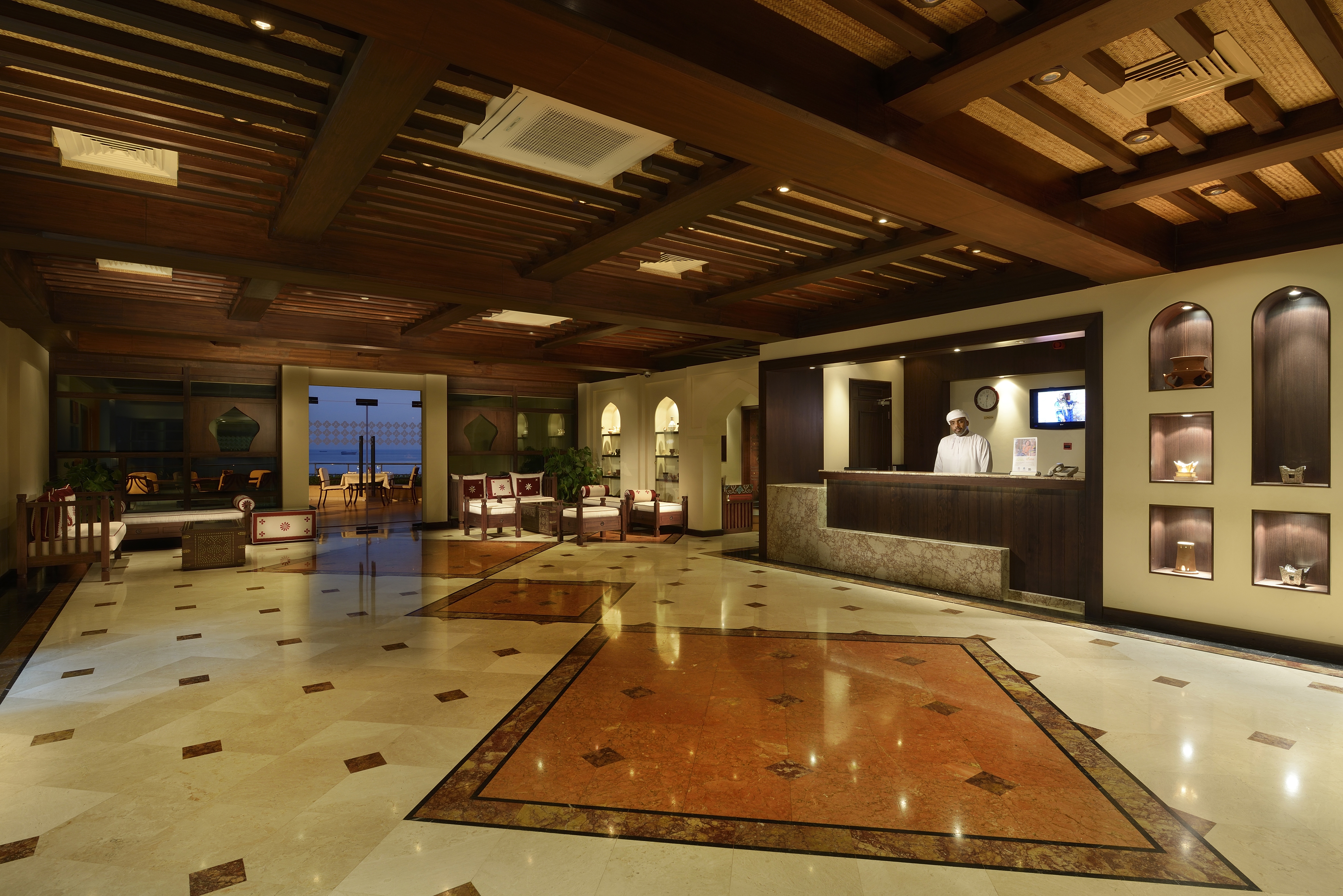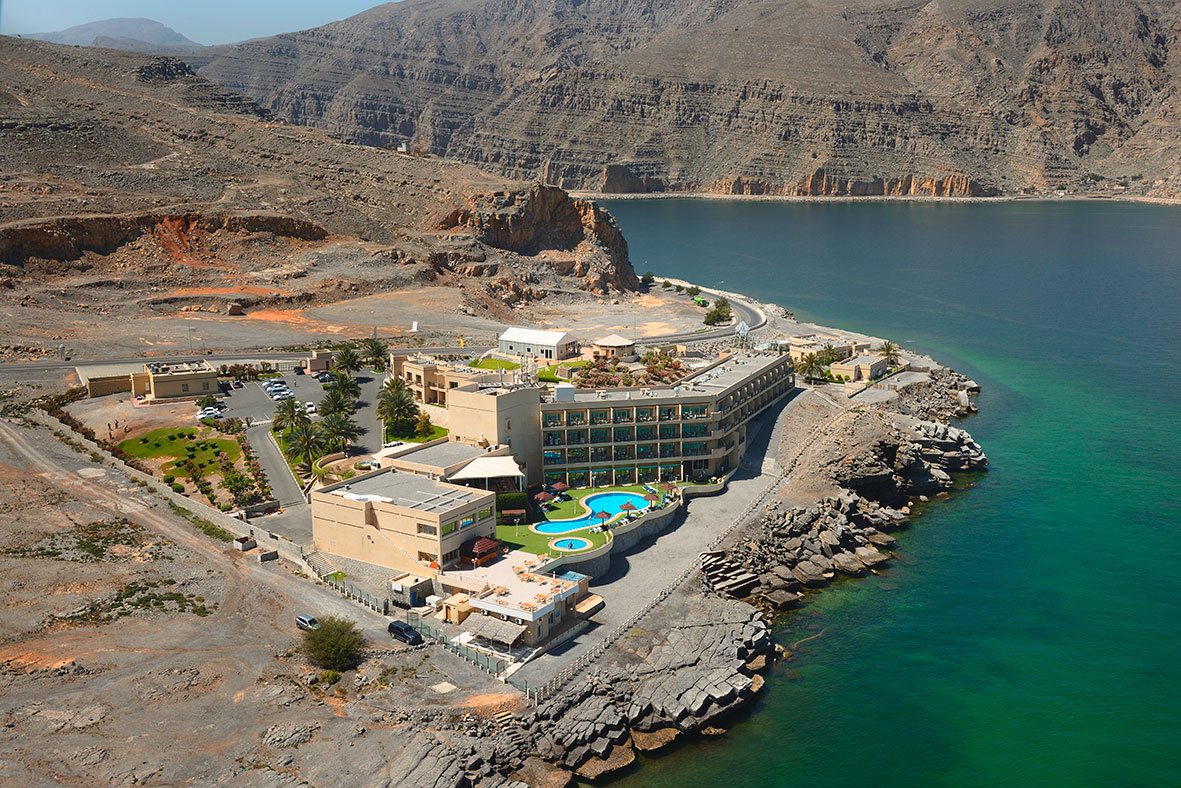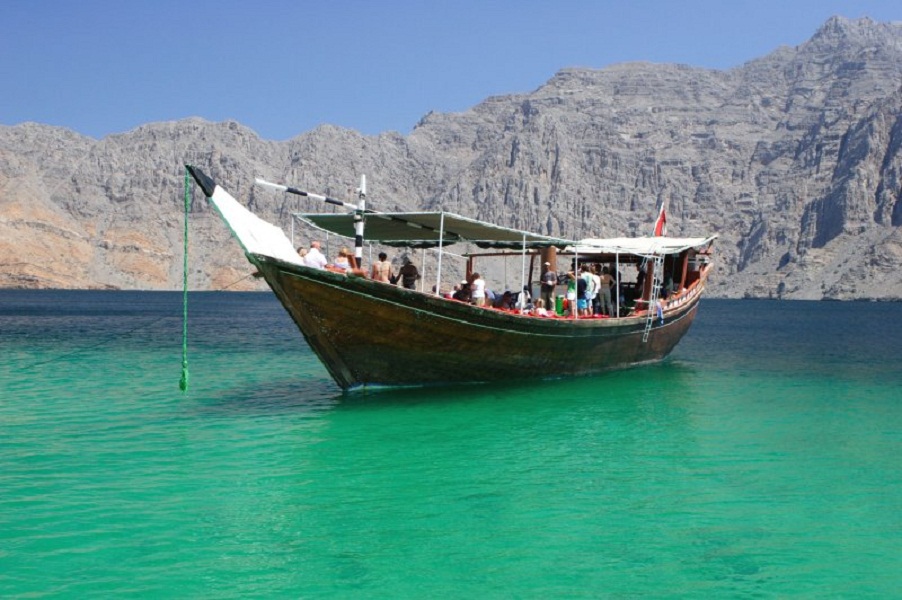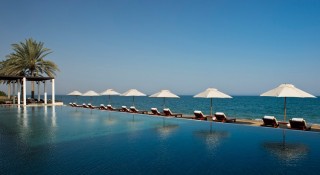Rolling mist continued to hold sway over mountains and fjords. Temperatures apart, it could have been Scotland or Norway. Ali told us that on sunny days, the waters were so clear that coral and tropical fish could be seen from the deck, and that it was not unusual to be accompanied by turtles, reef sharks, or dolphins. However, there was something mysterious and appropriate about today’s mist-clad khors, creating an atmosphere well suited to tales of pirates who once hid in these secret inlets.
Secluded villages fringing the sound have taken strides into the modern world. Square, concrete houses with satellite TV receivers stand before the ruins of old stone-built dwellings that blend into the rugged background. Pylons, miraculously striding over mountain peaks, carry electricity to the coast. “Children have school in Khasab, by boat,” Ali explained. “And water for villages comes by boat,” he added, pointing to a huge blue tank strategically stationed on the stony beach.
Our tour took us to a barren and isolated outcrop—the notorious Telegraph Island, a.k.a. Jazirat al Maqlab. A flight of worn stone steps led to the crumbling ruins of a short-lived British telegraph station; it was from this remote outpost that engineers passed the first telegraphic message from London to Karachi in 1865. But the achievement took its toll on the men. Assigned to this sun-blasted rock for tours of duty lasting six months, some of the station’s operators suffered from a form of isolation madness that became known by the expression “going round the bend.” As we left the inhospitable island, sunlight filtering through the clouds gave shape to the mountains and depth to the water. An extra touch of enchantment was added when the resident school of dolphins broke the surface to greet us, and then escorted us back to Khasab’s port.
One minute we were climbing a steep sandy track, and the next we crested a ridge and braked to a sudden halt. Below us, stretched between the arms of a ring of mountains, lay the aquamarine waters of a magnificent inlet. Great fingers of green merged with blue and reached between amber slopes to distant hidden coves that sheltered isolated villages, before opening to the jaws of the Arabian Sea. It was Khor Najd, the only fjord accessible by road from Khasab and a photographer’s dream. I knew that attempts to capture the sheer size and wonder of it were bound to fail. So it remains, imperfectly reproduced on film, a living memory of the magic of Musandam.
This article is an adapted excerpt from Way South of Wahiba Sands: Travels with Wadiman (Austin Macauley; 2013), a memoir by English author Adrienne Brady about her travels with partner Richard Chapman through the mountains, deserts, and remote coastal regions of the United Arab Emirates and Oman, as well as their later adventures in Namibia, Botswana, South Africa, and Ethiopia.
THE DETAILS
Getting There
Khasab’s tiny airport receives daily Oman Air flights from Muscat, though most visitors arrive from Dubai by road via the emirate of Ras al Khaimah, a three-hour drive along the coast.
Where to stay
Magnificently seton a rocky headland just outside town, the recently refurbished Atana Khasab Hotel (968-26/730-777; doubles from US$120) is the most comfortable roost in the area, with unimpeded sea views and a host of facilities including two swimming pools, a tour desk, and a PADI dive center.
This article originally appeared in the April/May 2014 print issue of DestinAsian magazine (“Dispatches: Oman, Musandam Magic”).








